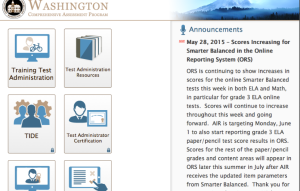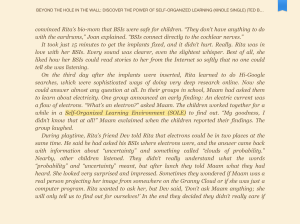P3 Practice standards-based assessment. Teacher candidates use standards-based assessment that is systematically analyzed using multiple formative, summative, and self-assessment strategies to monitor and improve instruction.
To me the HOPE principle of P3 is really addressing ability to provide students with a testing format that measures the skills of each student and their mastery of a particular topic. Matching the learning standard and the assessment to ensure that student’s aptitude is being looked at and evaluated on it’s own merits and not being judged in a competitive way.
Throughout this year and in particular when I worked through my edTPA project, I worked with, delivered and evaluated numerous assessments. My edTPA project alone contained about 6 or 7 different assessment styles including formative to help me evaluate student’s understanding of the lesson for that day, and summative to help me evaluate the growth of the students over the whole lesson.
One style of standards-based assessment that I’ve spent a lot of time with recently is the Smarter Balance Assessment (SBA). The SBA is a high-stakes test that is linked up directly to the Common Core State Standards (CCSS). Standards-based assessments are a way to measure if students have met the standard (for example, the Common Core State Standards) for a specific subject. They provide an unchanging target compared to the norm-based assessments, which are variable and frequently adjusted.
The evidence provided is a screenshot of the Smarter Balance Assessment website. It was my job to help administer this test in our classroom this quarter. This evidence is an example of my emerging level of competence in delivering this particular format of high-stakes test.
Because our classroom contains 4th, 5th, and 6th grade students we faced some additional challenges in administering this assessment. Those challenges included having to manage three separate groups, having some grades of students required to do more testing than others, and having students take a long time to finish testing (extra testing days, when others in the room are finished and ready to move on).
Because I have spent time working with various assessment styles this year I am more likely to realize the importance of using the standards as a starting point, then creating the assessment and criteria (rubric) to help students realize what level they need to be working toward.
In order to better understand the use and functions of standards-based tests I will need to spend additional time both in administering them and in evaluating the results information.

